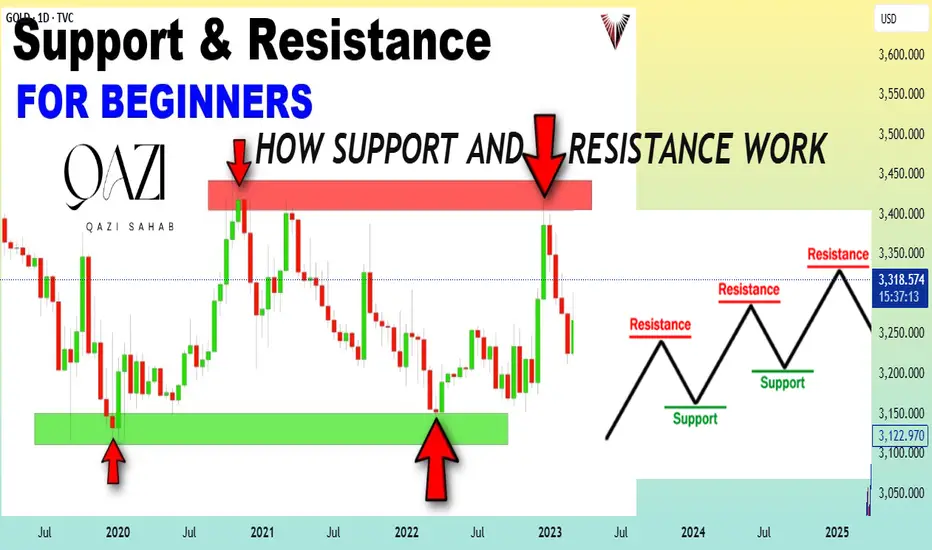Resistance and Support levels are crucial in technical analysis for understanding market dynamics and making informed trading decisions. Here's more on how they work and how traders use them:
How Resistance and Support Work
1.Resistance: When the price approaches a resistance level, sellers tend to enter the market or increase their selling, causing the price to stall or reverse downward.
2.Support: At support levels, buyers tend to enter or increase buying, causing the price to bounce back up.
Identifying Resistance and Support
Previous highs and lows: Often, previous peaks act as resistance, and previous troughs act as support.
Trendlines: Lines connecting highs or lows can indicate resistance or support.
Moving averages: Some traders use moving averages as dynamic support or resistance levels.
Trading Strategies Using Resistance and Support
1. Buying at support: Traders might buy when the price bounces off a support level.
2. Selling at resistance: Traders might sell or short-sell when the price hits a resistance level.
3. Breakouts: If the price breaks through resistance, it might signal a buy opportunity. If it breaks down through support, it could signal a sell.
Considerations
Breaks and flips: When a resistance is broken, it can become a new support. Conversely, a broken support can become resistance.
Strength of levels: The more times a level is tested without breaking, the stronger it might be perceived.
How Resistance and Support Work
1.Resistance: When the price approaches a resistance level, sellers tend to enter the market or increase their selling, causing the price to stall or reverse downward.
2.Support: At support levels, buyers tend to enter or increase buying, causing the price to bounce back up.
Identifying Resistance and Support
Previous highs and lows: Often, previous peaks act as resistance, and previous troughs act as support.
Trendlines: Lines connecting highs or lows can indicate resistance or support.
Moving averages: Some traders use moving averages as dynamic support or resistance levels.
Trading Strategies Using Resistance and Support
1. Buying at support: Traders might buy when the price bounces off a support level.
2. Selling at resistance: Traders might sell or short-sell when the price hits a resistance level.
3. Breakouts: If the price breaks through resistance, it might signal a buy opportunity. If it breaks down through support, it could signal a sell.
Considerations
Breaks and flips: When a resistance is broken, it can become a new support. Conversely, a broken support can become resistance.
Strength of levels: The more times a level is tested without breaking, the stronger it might be perceived.
🚨 Live Trading Alerts | Fast Market Updates
t.me/uktradercom
💸 Crypto | Forex | Indices
t.me/uktradercom
🧠 Learn While You Earn
t.me/uktradercom
📈 Follow the Smart Money
t.me/uktradercom
💸 Crypto | Forex | Indices
t.me/uktradercom
🧠 Learn While You Earn
t.me/uktradercom
📈 Follow the Smart Money
Disclaimer
The information and publications are not meant to be, and do not constitute, financial, investment, trading, or other types of advice or recommendations supplied or endorsed by TradingView. Read more in the Terms of Use.
🚨 Live Trading Alerts | Fast Market Updates
t.me/uktradercom
💸 Crypto | Forex | Indices
t.me/uktradercom
🧠 Learn While You Earn
t.me/uktradercom
📈 Follow the Smart Money
t.me/uktradercom
💸 Crypto | Forex | Indices
t.me/uktradercom
🧠 Learn While You Earn
t.me/uktradercom
📈 Follow the Smart Money
Disclaimer
The information and publications are not meant to be, and do not constitute, financial, investment, trading, or other types of advice or recommendations supplied or endorsed by TradingView. Read more in the Terms of Use.
